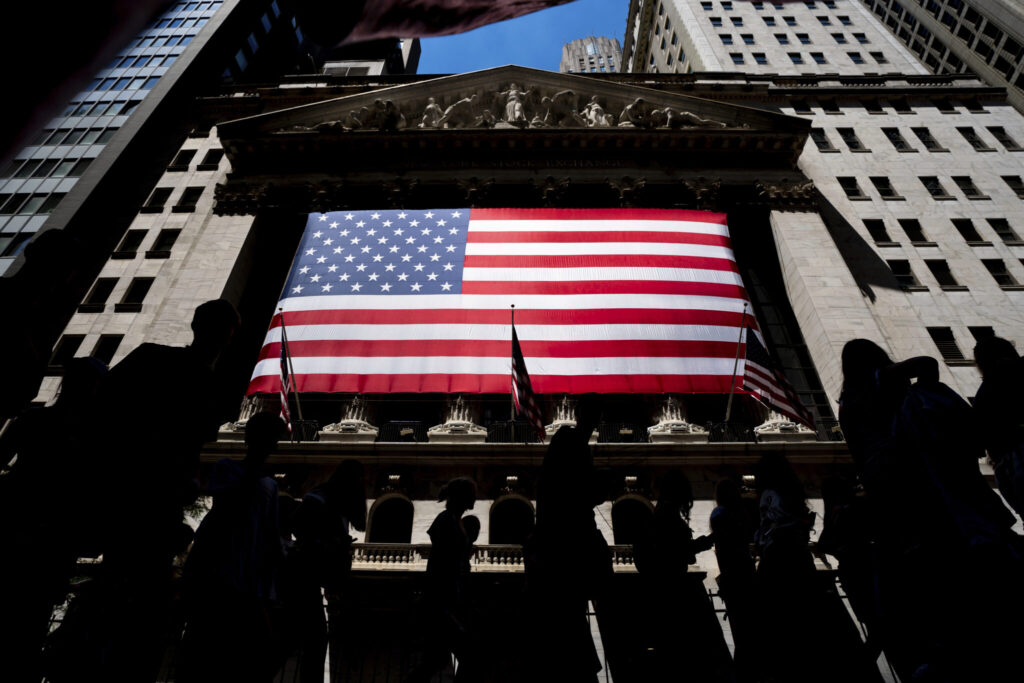Stocks edged lower in morning trading on Wall Street Monday as markets look ahead to updates on inflation and how American consumers are feeling about the economy. The S&P 500 fell 0.2%. The benchmark index is coming off a holiday-shortened week in the U.S. and its fourth straight winning week.
Quick Read
- Stock Market Movement: The S&P 500 and Dow Jones Industrial Average both saw slight declines in morning trading, while the Nasdaq fell marginally.
- Investor Sentiment on Inflation: Investors are cautiously optimistic that inflation is cooling, potentially leading the Federal Reserve to halt aggressive interest rate hikes.
- Economic Strength and Recession Concerns: Despite high interest rates and inflation, the broader economy has shown resilience, avoiding a recession so far.
- Market Performance: The S&P 500 has been rallying, on track for its best month of the year in November.
- Upcoming Economic Reports: Reports on consumer confidence and October data on the Federal Reserve’s preferred inflation measure are due this week, which could impact market sentiment.
- Crude Oil Prices and OPEC Meeting: Crude oil prices have slightly declined, with an upcoming OPEC meeting that could influence future pricing and impact inflation.
- Federal Reserve’s Interest Rate Policy: The Fed’s benchmark interest rate has remained steady since July, with expectations it will stay stable through early 2024.
- Fed’s Future Rate Decisions: Investors anticipate the possibility of a rate cut in mid-2024, but the Fed emphasizes decisions will be based on economic reports to balance inflation control and economic growth.
- Corporate Earnings and Market Focus: After a round of better-than-expected corporate earnings, the market focus remains on the Fed’s actions for the rest of the year.
The Associated Press has the story:
Wall Street edges lower after the Thanksgiving holiday as winning streak cools
Newslooks- NEW YORK (AP)
Stocks edged lower in morning trading on Wall Street Monday as markets look ahead to updates on inflation and how American consumers are feeling about the economy.
The S&P 500 fell 0.2%. The benchmark index is coming off a holiday-shortened week in the U.S. and its fourth straight winning week.
The Dow Jones Industrial Average fell 73 points, or 0.2%, to 35,318 as of 11:16 a.m. Eastern. The Nasdaq fell 0.1%.
Treasury yields slipped. The yield on the 10-year Treasury fell to 4.43% from 4.47%.
Stocks were mostly lower in Asia and mixed in Europe.
Investors have grown cautiously optimistic that inflation has cooled enough for the Federal Reserve to put a definitive end to its aggressive interest rate hikes. Meanwhile, the broader economy has remained strong enough in the face of rising interest rates and inflation to avoid a recession.
Markets have been rallying on that sentiment and the S&P 500 remains on track to close out November as its best month of the year. Investors will get more updates on the economy this week to help either confirm or soften that sentiment.
On Tuesday the Conference Board issues its latest report on consumer confidence, which has remained solid throughout the year. Economists polled by FactSet expect another solid reading for the October report.
Crude oil prices fell slightly but remain mostly stable ahead of OPEC’s meeting on Thursday. The cartel has maintained tight supplies, though prices have been falling over the last month. Lower energy prices could further ease inflation’s squeeze on consumers and help fuel economic growth.
On Thursday, Wall Street will be closely watching the government’s October data on the Federal Reserve’s preferred measure of inflation. Economists expect that measure to continue easing, as it has been since the middle of 2022.
Investors have put the latest round of surprisingly good corporate earnings behind them, following several disappointing quarters. The main focus through the end of the year will be on the Fed and what it does next.
The Fed has been holding its benchmark interest rate steady at a range of 5.25% to 5.50% since its last quarter-point hike at its July meeting. Wall Street is betting that the rate will remain stable at the central bank’s December meeting and into early 2024, according to CME’s FedWatch tool.
Investors are increasingly leaning toward the Fed cutting rates in the middle of 2024 and easing it off its highest level in two decades. The central bank, though, has said it will make upcoming decisions based on the latest economic reports in its ongoing effort to cool inflation without slowing economic growth to the point of a recession.







